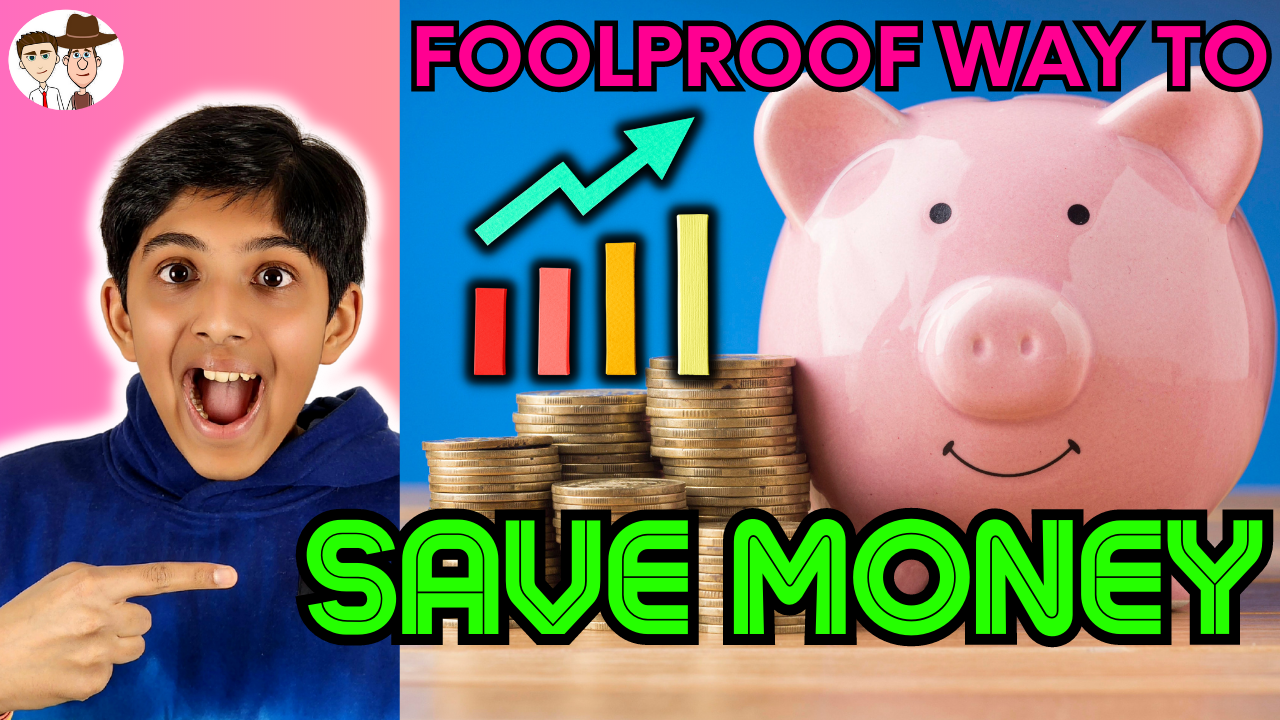Introduction to Pay Yourself First for Kids and Teens
This video explains the concept of ‘pay yourself first’ in a simple, concise way for kids and beginners. It could be used by kids & teens to learn about paying yourself first, or used as a money & personal finance resource by parents and teachers as part of a Financial Literacy course or K-12 curriculum.

Suitable for students from grade levels:
- Kindergarten
- Elementary School
- Middle School
- High School
The topics covered are:
- How can you save money when you can barely make ends meet
- How to solve that problem and actually start saving
- How to implement the ‘Pay Yourself First’ strategy
Using this simple, 10 minute strategy, you will be able to save money very quickly and easily, and will always be sure that you are saving enough without worrying about it.
Intrigued? Let’s begin.
How can I save money when I can barely make ends meet?
You’re certainly not alone. This is a very common problem.
When most people receive a paycheck, they spend on needs like rent and groceries, and then on nice-to-haves like entertainment and eating out. If there is any money left, they are tempted to spend it on wants – like an expensive pair of shoes they have been eyeing.
Only after all that, do they think of saving, if at all!
So by the time they remember to save, they have already spent most of their paycheck, if not all of it!
To save money quickly and easily, this vicious cycle needs to be broken.
How can I solve that problem and actually start saving?

Instead of spending first, and then saving what’s left over like most people, you should save first, and then spend what’s left over. This is called ‘pay yourself first’.
Pay yourself first means that you don’t ever even get a chance to spend the money you want to save: When you pay yourself first, money is saved immediately after you receive it, and trust me, you won’t even miss the money you set aside.
Even if you set aside just 10% of your paycheck, it will slowly add up to something substantial. Think of it as money that is not yours to spend no matter how tempting it is – treat it like a payroll deduction.
Once you park it and forget it, you will also have the freedom to spend what’s leftover without feeling guilty or worrying about not having anything left to save!
How can I implement the strategy of ‘pay yourself first’?
First, decide how much you want to pay yourself. How much should you pay yourself first? You can start with 5% or 10% of your paycheck, and when you feel comfortable, increase the amount.
And although you can save money manually, it is way better to do it automatically. This way you can avoid any last minute temptations, and the money gets saved before you can lay your hands on it.
You just need to set up automatic transfers between your checking account where you receive your paycheck, and your savings account. This takes less than 15 minutes, and needs to be done only once.
After that, money will automatically get saved as soon as you get your paycheck – without you even having to think about it. And that’s the best way to implement the pay yourself first method!
To learn more about checking and savings accounts and their differences, check out Comparison: Checking Account vs Savings Account
Download Transcript: Ideal for Use by Teachers in their Lesson Plan to Teach Kids & Teens

